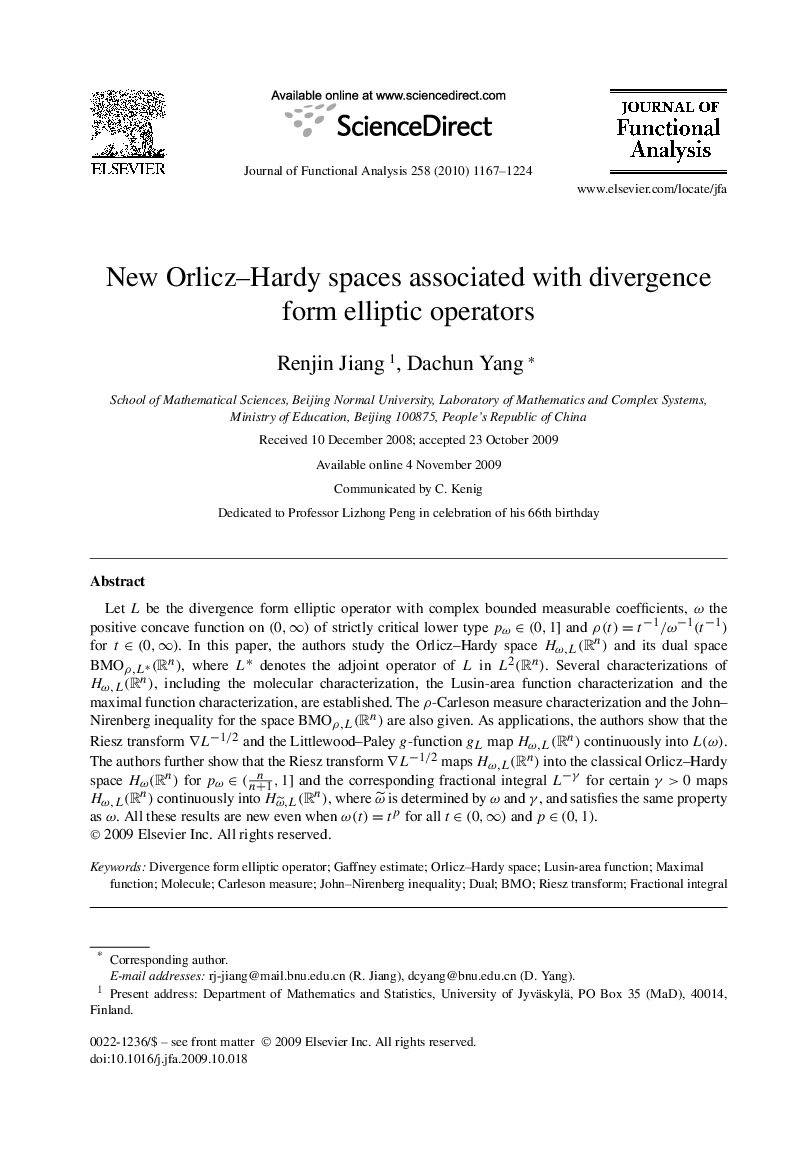| Article ID | Journal | Published Year | Pages | File Type |
|---|---|---|---|---|
| 4591485 | Journal of Functional Analysis | 2010 | 58 Pages |
Let L be the divergence form elliptic operator with complex bounded measurable coefficients, ω the positive concave function on (0,∞) of strictly critical lower type pω∈(0,1] and ρ(t)=t−1/ω−1(t−1) for t∈(0,∞). In this paper, the authors study the Orlicz–Hardy space Hω,L(Rn) and its dual space BMOρ,L*(Rn), where L* denotes the adjoint operator of L in L2(Rn). Several characterizations of Hω,L(Rn), including the molecular characterization, the Lusin-area function characterization and the maximal function characterization, are established. The ρ-Carleson measure characterization and the John–Nirenberg inequality for the space BMOρ,L(Rn) are also given. As applications, the authors show that the Riesz transform ∇L−1/2 and the Littlewood–Paley g-function gL map Hω,L(Rn) continuously into L(ω). The authors further show that the Riesz transform ∇L−1/2 maps Hω,L(Rn) into the classical Orlicz–Hardy space Hω(Rn) for and the corresponding fractional integral L−γ for certain γ>0 maps Hω,L(Rn) continuously into , where is determined by ω and γ, and satisfies the same property as ω. All these results are new even when ω(t)=tp for all t∈(0,∞) and p∈(0,1).
